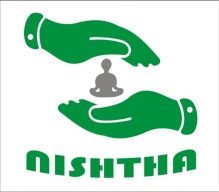What is Autism Spectrum Disorder ?
Nishtha is a comprehensive multi-service school that provides educational, therapeutic and recreational services for children with special needs thereby fostering their physical, educational, emotional and social development and thus enabling them to play, learn, live and function in the real world.
Parents mostly identify signs in the first two years of their child’s life. The signs usually develop gradually, but some autistic children first develop more normally and then regress. Although there is no established cure, early behavioral or cognitive intervention can help autistic children gain self-care, social, and communication skills. Not many children with autism live by the few who grow to be successful.
Autism Spectrum Disorder has a strong genetic basis, although the genetics of autism are complex and it is unclear whether ASD is explained more by rare mutations, or by rare combinations of common genetic variants. In rare cases, autism is strongly associated with agents that cause birth defects. Controversies surround other proposed environmental causes, such as heavy metals, pesticides or childhood vaccines; the vaccine hypotheses are biologically implausible and lack convincing scientific evidence. The prevalence of ASD is about 6 per 1,000, with about four times as many males as females.
Unique Features
Autism is a highly variable neuro-developmental disorder that first appears during infancy or childhood, and generally follows a steady course without remission. Overt symptoms gradually begin after the age of six months, become established by age two or three years, and tend to continue through adulthood, although often in more muted form. It is distinguished not by a single symptom, but by a characteristic triad of symptoms: impairments in social interaction; impairments in communication; and restricted interests and repetitive behavior. Other aspects, such as atypical eating, are also common but are not essential for diagnosis. Autism’s individual symptoms occur in the general population and appear not to associate highly, without a sharp line separating pathologically severe from common traits.
DSM-IV-TR (fourth edition, text revision)1 as two of the five pervasive developmental disorders (PDD), more often referred to today as autism spectrum disorders (ASD). All these disorders are characterized by varying degrees of impairment in communication skills, social interactions, and restricted, repetitive and stereotyped patterns of behavior.
Potential signs of Autism Spectrum Disorders
- Does not combine two words by 2 years
- Loses language or social skills
- Does not babble, point, or make meaningful gestures by 1 year of age
- Does not speak one word by 16 months
- Does not respond to name
Some Other Indicators
- Doesn’t smile
- Poor eye contact
- Doesn’t seem to know how to play with toys
- At times seems to be hearing impaired
- Excessively lines up toys or other objects
- Is attached to one particular toy or object
Repetitive Behaviors
Mostly children with ASD commonly look physically normal and have fine muscle control, odd repetitive actions may set them apart from other children. These behaviors might be severe and highly apparent or more delicate. Some children and adults spend a lot of time constantly flapping their arms or walking on their toes. Some abruptly arrest in one position.
As children, they might spend hours lining up their toy or any other materials in a peculiar way, rather than using them for portray play. If someone by mistake turns one of the toys, the child may be extremely upset. ASD children need, and insist, absolute uniformity in their environment. A minor change in any routine-in eating time, dressing, taking a bath, and playing and by the same route-can be extremely disturbing. Perhaps order and uniformity lend some stability in a world of confusion.
Repetitive behavior often takes the form of a relentless, intense preoccupation. For example, the child might be possessed with learning all about cleaning, school schedules, or street light. Often there is huge interest in numbers, symbols, or science topics.
Communication Difficulties
By pre school age , most children have passed conventional predictable developmental milestones on the path to learning language; one of the earliest is babbling. By the first birthday, a typical toddler says words, turns when he hears his name, points when he wants a toy, and when offered something distasteful, makes it clear that the answer is “no.”
Those who do speak often use language in unusual ways. They seem unable to combine words into meaningful sentences. Some speak only single words, while others repeat the same phrase over and over. Some ASD children parrot what they hear, a condition called echolalia. Although many children with no ASD go through a stage where they repeat what they hear, it normally passes by the time they are 3. While it can be hard to understand what ASD children are saying, their body language is also difficult to understand. Facial expressions, movements, and gestures rarely match what they are saying. Also, their tone of voice fails to reflect their feelings. A high-pitched, sing-song, or flat, robot-like voice is common. Some children with relatively good language skills speak like little adults, failing to pick up on the “kid-speak” that is common in their peers.
